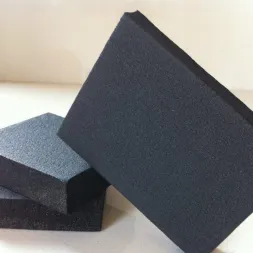Your Position: Home - Other Heat Insulation Materials - Rubber Insulation Sheet vs. Foam Insulation: Which Material Offers Better Thermal and Moisture Protection?
Choosing the right insulation material is critical for energy efficiency, moisture control, and overall system performance—especially in HVAC, construction, and industrial applications. Two commonly used materials are rubber insulation sheets and foam insulation. Each offers distinct benefits, but which one provides better thermal and moisture protection for your specific needs? Let’s compare them across several important dimensions.
Rubber insulation sheets are widely used in HVAC systems, industrial pipelines, and cold storage environments due to their excellent flexibility and resistance to water vapor. Foam insulation, typically made from polyurethane or polystyrene, is more commonly used in residential and commercial building envelopes, such as walls, roofs, and floors.
For example, in ductwork applications, rubber insulation sheets are often preferred for their ability to conform to curved or irregular surfaces. Foam insulation, while effective in rigid wall assemblies, may require additional sealing to avoid air leakage.
B2B users in mechanical and industrial sectors often lean towards rubber insulation sheets for systems requiring thermal stability and moisture resistance. Builders and contractors, on the other hand, may choose foam insulation for ease of installation in large-scale construction projects.
In facility management, rubber sheets are favored by HVAC engineers for equipment insulation, whereas foam boards are more popular among general contractors managing thermal performance in housing developments.
Rubber insulation sheets typically have a thermal conductivity of around 0.034 W/m·K, maintaining consistent performance across a wide temperature range (-40°C to 105°C). Foam insulation, especially closed-cell types, may offer slightly better insulation values—around 0.022 to 0.030 W/m·K—but can degrade under high heat or UV exposure.
In high-temperature environments or applications requiring long-term thermal stability, rubber insulation tends to be more reliable. Foam insulation excels in residential wall cavities where temperature fluctuation is moderate.

Rubber insulation sheets boast a closed-cell structure with built-in vapor barrier properties, making them highly resistant to moisture intrusion. Foam insulation varies in performance—open-cell types can absorb water, while closed-cell types are more resistant but still benefit from an added vapor barrier.
In areas with high humidity or risk of condensation, such as refrigeration units or underground piping, rubber insulation offers better long-term protection against mold and corrosion compared to foam.
Rubber sheets are known for their flexibility and ease of cutting, wrapping, and sealing, even around bends and joints. Foam insulation, while lighter and easier to handle in large panels, can be brittle and may require more effort to fit around non-standard shapes.
For retrofitting or insulating mechanical systems with irregular geometry, rubber insulation is clearly the more convenient option. Foam boards work best in straightforward, linear construction assemblies.
Foam insulation generally has a lower upfront material cost, especially when purchased in bulk for construction. However, rubber insulation sheets, though slightly more expensive, often yield better ROI over time due to reduced maintenance and higher durability in harsh conditions.
In lifecycle cost assessments, rubber insulation may outperform foam in industrial or commercial applications where performance and reliability directly affect operational costs.
Advantages: Excellent flexibility, vapor barrier built-in, resistant to mold and mildew, ideal for mechanical applications.
Disadvantages: Higher initial cost, may require adhesives or cladding for mechanical protection.
Advantages: Lower material cost, good thermal performance, easy to use in standard construction.
Disadvantages: Can absorb moisture (open-cell), less flexible, prone to degradation under UV or extreme heat.
When choosing between rubber insulation sheets and foam insulation, the decision should be based on your specific project requirements. If you’re insulating complex mechanical systems in high-moisture or temperature-variable environments, rubber insulation pipes offer superior protection and long-term value. On the other hand, if you’re working on a residential or commercial construction project with standard wall assemblies, foam insulation is a cost-effective and efficient option.
Ultimately, understanding the environmental conditions, installation complexity, and performance expectations will help you make the right choice for thermal and moisture protection.
13
0
0
Comments
All Comments (0)